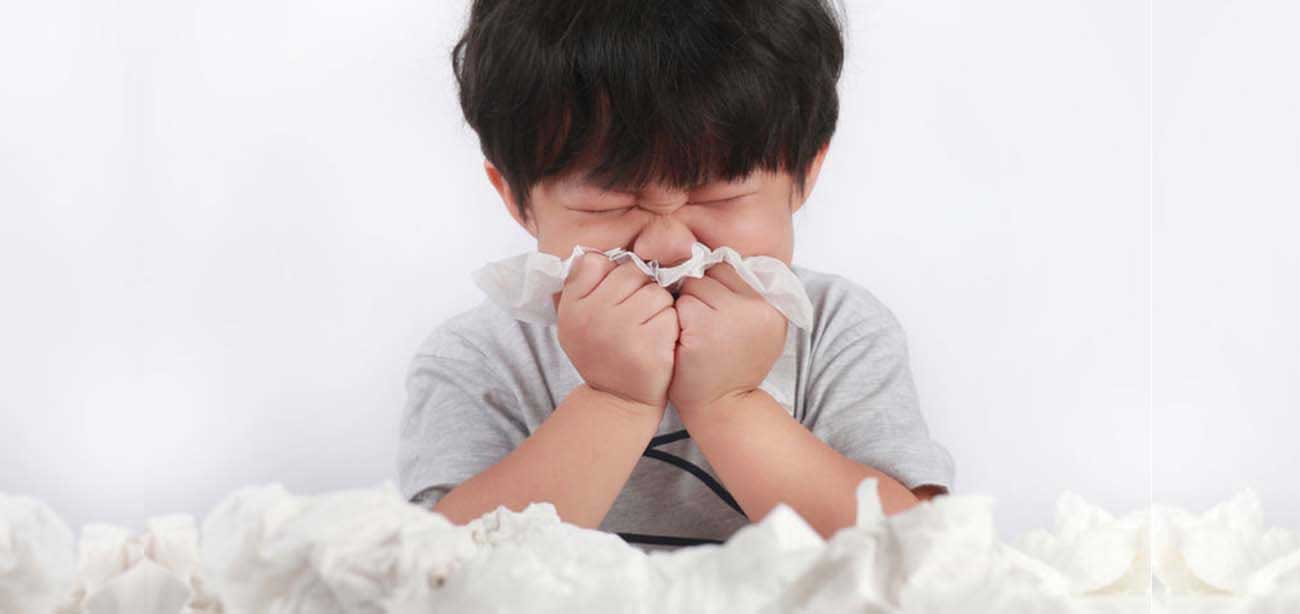1-in-3 children have allergies, and many parents don’t realize it.
Its a nightmare for parent to see their child suffer.
Any child can develop allergies, but they are more common in children from families with a history of allergies.
Since it’s impossible for parents to control absolutely everything that their child is exposed to or eats, parents should instead focus on monitoring their child for symptoms.

Allergies are abnormal immune system reactions to things that are typically harmless to most people.
When a person is allergic to something, the immune system mistakenly believes that this substance is harming the body.
Allergies tend to run in families, which means it can be passed down through genes from parents to their kids.
Some kids have allergies even if no family member is allergic, and those who are allergic to one thing are likely to be allergic to others.
An allergy happens when the immune system overreacts to an allergen, treating it as an invader and trying to fight it off.
This causes a range of symptoms from annoying to serious or even life-threatening.
Some good options for snacks can include:
The Immune system makes antibodies called IgE which causes certain cells to release chemicals (including histamine) into the bloodstream to defend against the allergen “invader.”
The release of these chemicals causes allergic reactions. These reactions can affect the skin eyes, nose, throat, lungs, and gastrointestinal tract.
Future exposure to that same allergen will trigger this allergic response again.
Allergies can happen anytime someone comes in contact with an allergen.
So, when a person with a food allergy eats that particular food or someone who’s allergic to dust mites is exposed to them, they will have an allergic reaction.
Although often not considered a severe allergy symptom, sneezing is the most common manifestation of Allergy.
Body’s reaction to histamine includes itchiness and swelling inside nose and throat.
When these membranes become irritated, brain tells your chest to contract and sneeze to remove the irritants.
To reduce sneezing fits, avoid allergy triggers or try relieving other symptoms causing irritation in nose and throat.
A runny nose is another common allergy symptoms in children.
When allergens enter our nose, the membrane swells and presses fluid out of small blood vessels in our nasal passages – typically a thin, clear liquid.
Its important to drink plenty of fluids and stay hydrated to reduce symptoms.
Many allergens are airborne and come into direct contact with our eyes.
That’s why more than 80% of children with allergies experience itchy, watery, or teary eyes.
If they already feel irritated, help soothe them by washing face and then placing a cool, moist washcloth over eyes.
If allergies include upper respiratory symptoms – sneezing and an itchy or runny nose – sinuses might become swollen and blocked.
Many people feel the blockage in their face, especially under the eyes, and find it difficult to breathe through nose.
The membranes in both nose and throat are sensitive to allergens you breathe in and can become irritated.
Itchy nasal passages or an itchy throat can also be a reaction to too much histamine in our system, or the result of mucus drain from a runny nose.
To help reduce this itchiness, try a throat lozenge.
Symptoms can be managed but there’s no cure for allergies.
The best way to cope with them is to avoid the allergens.
That means the parents must educate their kids early and often, not only about the allergy itself, but also about the reactions they can have if they consume or come into contact with the allergen.
If avoiding environmental allergens isn’t possible or doesn’t help, doctors might prescribe medicines, including antihistamines, eye drops, and nasal sprays.
Telling all caregivers (childcare staff, teachers, family members, parents, friends, etc.) about child’s allergy is also important.
In some cases, doctors recommend Immunotherapy to help desensitize a person to an allergen. Immunotherapy is only helpful for allergens such as dust, animals, mold, pollen and insect stings. They’re not used for food allergies.
To help kids avoid airborne allergens:
Avoid family pets in the child’s bedroom.
Remove rugs or Carpets from your child’s room (hard floors don’t collect dust as much as carpets do).
Don’t hang heavy drapes and get rid of other items that allow dust to build up.
if child is allergic to dust mites Clean only when your child is not in the room.
Keep kids who are allergic to mold away from damp areas, such as some basements, and keep bathrooms and other mold-prone areas clean and dry.
Put a dehumidifier in damp areas of the home. But remember to clean it often.
After playing outside when the pollen counts are high, have child take a bath or shower, wash his or her hair, and change clothes.
Use special covers to seal pillows and mattresses If child has a pollen allergy, keep the windows closed when pollen season is at its peak, have child take a bath or shower and change clothes after being outdoors, and don’t let him or her mow the lawn.
Kids with food allergies need to completely avoid products that contain their allergens.
This can be difficult as allergens are found in many unexpected foods and products.
Cross-contamination means that the allergen is not one of the ingredients in a product, but might have come into contact with it during production or packaging.
Companies are not required to label for cross-contamination risk, though some voluntarily do so. You may see statements such as “May contain…,” “Processed in a facility that also processes…,” or “Manufactured on equipment also used for ….”
Because products without such statements also might be cross-contaminated and the company did not label for it, it’s always best to contact the company to see if the product could contain your child’s allergen.
Look for this information on the company’s website or email a company representative.
Copyright © Dr. Anil Solanki